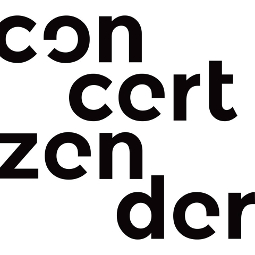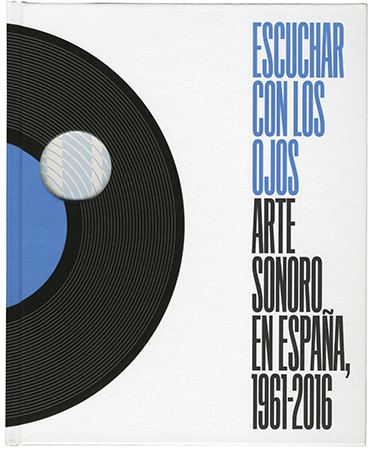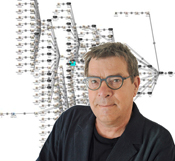Concertzender: Sound art in Spain
24-05-2017 23:00 C.E.T.
Electronic Frequencies

Sound Art in Spain (1961–2016). part 1
Produced by Roland Kuit
Given that the visual appearance of museum exhibition spaces has remained more or less unaltered since the 1960s, the presentation of what has come to be known as ‘sound art’ in these institutions supposes a number of challenges. Just as video art did when it first came on the scene, sound art has forced museums and arts centres (to paraphrase R. Murray Schafer’s well-known The Tuning of the World) to ‘retune’ the ways in which they present artworks in their permanent and temporary galleries. When sound comprises the entirety of a work of art (rather than being one of several components of an installation or taking the form of interpreted or experimental music), the actions and decisions of curators and exhibition designers must respond to a concept of sound not contemplated in definitions provided by acoustics or musicology.
Over the past three decades, artists have presented, employed, evoked or articulated sound in works that have collectively come to be known as sound art, Klangkunst (a term that carries a somewhat different meaning) in German and arte sonoro in Spanish. The consolidation of this new genre has been greatly facilitated by museum and gallery exhibitions, the development of a specialised bibliography, academic research on the topic and the emergence of new disciplines such as ‘sound studies’ that offer a sonic counterpart to visual studies.
Nevertheless, attention paid to sound art in Spain and elsewhere in terms of acquisitions by collectors and exhibitions remains relatively slight. Historic events focusing on sound art in Spain such as the 1972 international avant-garde art festival Los Encuentros de Pamplona, recent exhibitions, Ars Sonora (a radio programme directed by José Iges from 1987 to 2008) and printed publications such as Llorenç Barber’s La mosca tras la oreja and MASE (Muestra de Arte Sonoro Español, a book documenting a sound art project conducted from 2006 to 2014) attest to a growing interest in sound-based art. Notwithstanding, visual art, conceptual art and video art have attracted institutional interest more easily and quickly.
Escuchar con los ojos. Arte sonoro en España, 1961-2016.
Fundación Juan March, Madrid.
Textos de: Albert Alcoz, Miguel Álvarez-Fernández, María Andueza, Javier Ariza, José Manuel Berenguer, José Manuel Costa, Francisco Felipe, Manuel Fontán del Junco, José Iges, Javier Maderuelo, José Luis Maire, Miguel Molina, Carmen Paººrdo, Antoni Pizà y Henar Rivière.

25 x 21.5 cm, 354 pages. ISBN: 978-84-7075-642-9
1/Manuel Calvo (Oviedo, 1934): cat. 9.
2/Carlos Cruz de Castro (Madrid, 1941): cat. 23, 26, 43 y 66.
3/Luis de Pablo (Bilbao, 1930): cat. 32, 55 y 128.
Sound Art in Spain Part I
Electronic Frequencies

Sound Art in Spain (1961–2016). part 1
Produced by Roland Kuit
Given that the visual appearance of museum exhibition spaces has remained more or less unaltered since the 1960s, the presentation of what has come to be known as ‘sound art’ in these institutions supposes a number of challenges. Just as video art did when it first came on the scene, sound art has forced museums and arts centres (to paraphrase R. Murray Schafer’s well-known The Tuning of the World) to ‘retune’ the ways in which they present artworks in their permanent and temporary galleries. When sound comprises the entirety of a work of art (rather than being one of several components of an installation or taking the form of interpreted or experimental music), the actions and decisions of curators and exhibition designers must respond to a concept of sound not contemplated in definitions provided by acoustics or musicology.
Over the past three decades, artists have presented, employed, evoked or articulated sound in works that have collectively come to be known as sound art, Klangkunst (a term that carries a somewhat different meaning) in German and arte sonoro in Spanish. The consolidation of this new genre has been greatly facilitated by museum and gallery exhibitions, the development of a specialised bibliography, academic research on the topic and the emergence of new disciplines such as ‘sound studies’ that offer a sonic counterpart to visual studies.
Nevertheless, attention paid to sound art in Spain and elsewhere in terms of acquisitions by collectors and exhibitions remains relatively slight. Historic events focusing on sound art in Spain such as the 1972 international avant-garde art festival Los Encuentros de Pamplona, recent exhibitions, Ars Sonora (a radio programme directed by José Iges from 1987 to 2008) and printed publications such as Llorenç Barber’s La mosca tras la oreja and MASE (Muestra de Arte Sonoro Español, a book documenting a sound art project conducted from 2006 to 2014) attest to a growing interest in sound-based art. Notwithstanding, visual art, conceptual art and video art have attracted institutional interest more easily and quickly.
Escuchar con los ojos. Arte sonoro en España, 1961-2016.
Fundación Juan March, Madrid.
Textos de: Albert Alcoz, Miguel Álvarez-Fernández, María Andueza, Javier Ariza, José Manuel Berenguer, José Manuel Costa, Francisco Felipe, Manuel Fontán del Junco, José Iges, Javier Maderuelo, José Luis Maire, Miguel Molina, Carmen Paººrdo, Antoni Pizà y Henar Rivière.

25 x 21.5 cm, 354 pages. ISBN: 978-84-7075-642-9
1/Manuel Calvo (Oviedo, 1934): cat. 9.
2/Carlos Cruz de Castro (Madrid, 1941): cat. 23, 26, 43 y 66.
3/Luis de Pablo (Bilbao, 1930): cat. 32, 55 y 128.
Sound Art in Spain Part I

Comments
Electronic Frequencies
Sound Art in Spain (1961–2016). part 2
Produced by Roland Kuit
Escuchar con los ojos. Arte sonoro en España, 1961-2016.
Fundación Juan March, Madrid.
1/ Soledad – Louis de Pablo, 1973.
2/ Tamaran – Juan Hidalgo, 1974.
3/ El sueño – Luis Mesa, 1985.
4/ Muestras sin valor – Comando Bruno y Avant-dernières pensées, 1986.
5/ Enyorança – Francisco Felipe, 1986.
6/ C1 – Anton Ignorant, 1986.
7/ Efemerópteros – Francisco López, 1986.
8/ Ortopoema – Felix Menkar, 1986.
9/ Keplero – Eduardo Polonio, 1986.
Arte Sonore en España 1961 – 2016.
ISBN: 978-84-7075-642-9
Sound Art in Spain Part 2
Electronic Frequencies
Sound Art in Spain (1961–2016). part 3
Produced by Roland Kuit
Escuchar con los ojos. Arte sonoro en España, 1961-2016.
Fundación Juan March, Madrid.
01/ Les temps multiples – José Manuel López, 1987
02/ Robots, uníos – Eduardo Polonio, 1987
03/ Proyecto inmaterial – Pedro Bericat, 1991
04/ Ob-lectum – José Manuel Berenguer, 1993
05/ Mascletá virtual – Leopoldo Amigo and Miguel Molina, 1998
06/ El ojo del silencio – José Antonio Sarmiento, 1986
07/ Saltamartí – Jori Mitjá, 2000
08/ Autor – Lily Greenham, 2007
09/ Untitled #205 – Francisco López, 2011
10/ Concierto Zaj para 30 0 60 voces – Esther Ferrer, 2012
11/ Aeolian Transmission – Pablo Sanz, 2012
12/ Madrid vivo – Javier Maderuelo, 1982
Arte Sonore en España 1961 – 2016
ISBN: 978-84-7075-642-9
Sound Art in Spain Part 3
Electronic Frequencies
Sound Art in Spain (1961–2016). part 4
Produced by Roland Kuit
Escuchar con los ojos. Arte sonoro en España, 1961-2016.
Fundación Juan March, Madrid.
1/ Machine Pattern #01 – Mikel R. Nieto, 2012.
2/ <<Carra A>>, Motores – Isodoro Valcárcel Medina, 1994.
3/ <<Carra B>>, Motores – Isodoro Valcárcel Medina, 1994.
Arte Sonore en España 1961 – 2016
ISBN: 978-84-7075-642-9
Sound Art in Spain Part 4